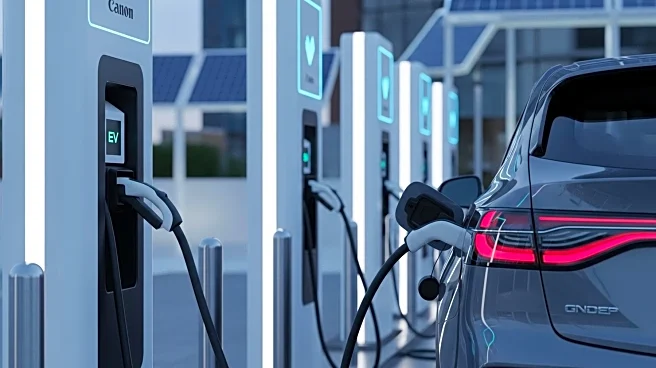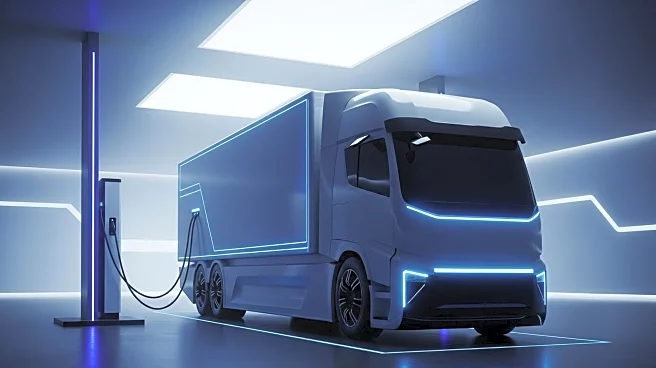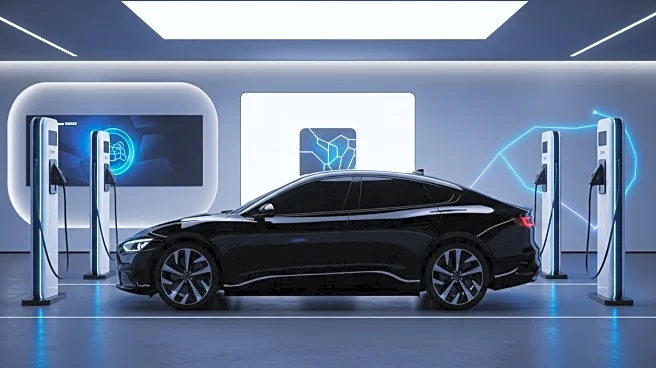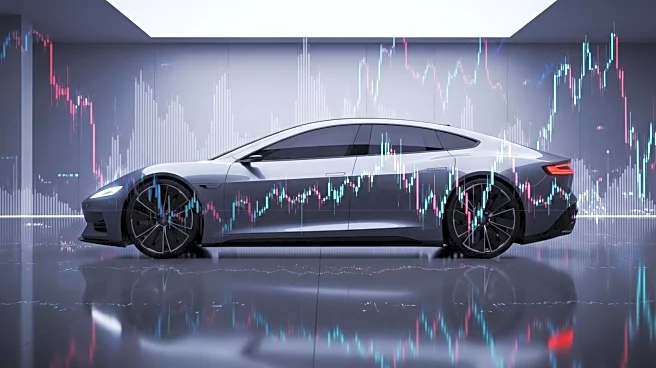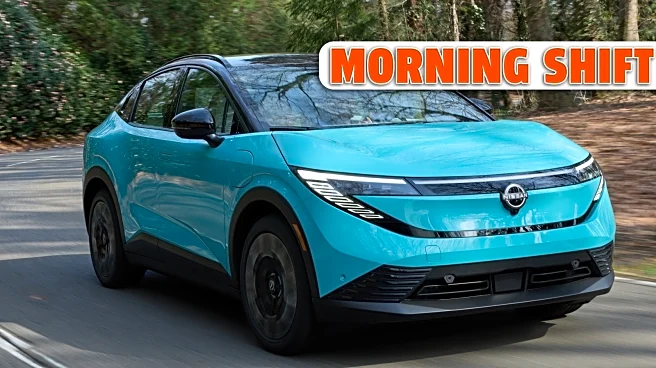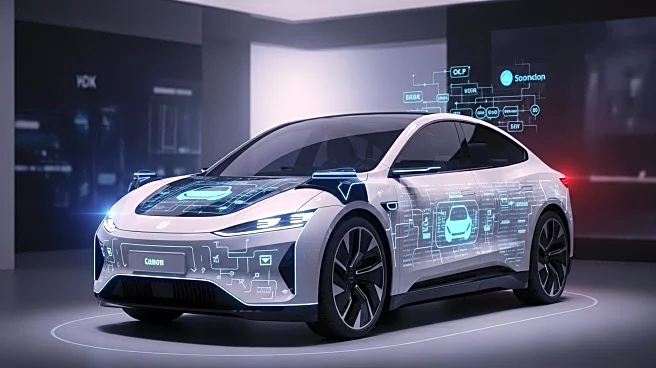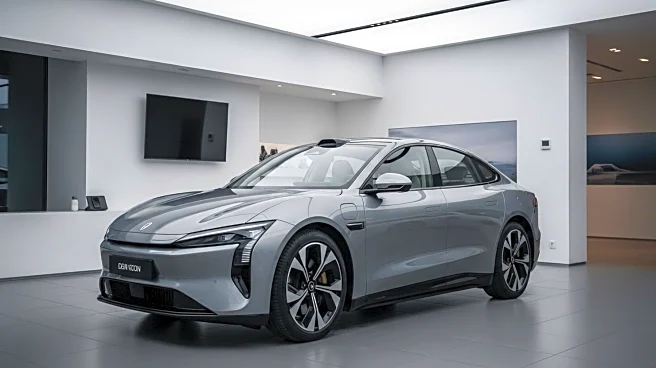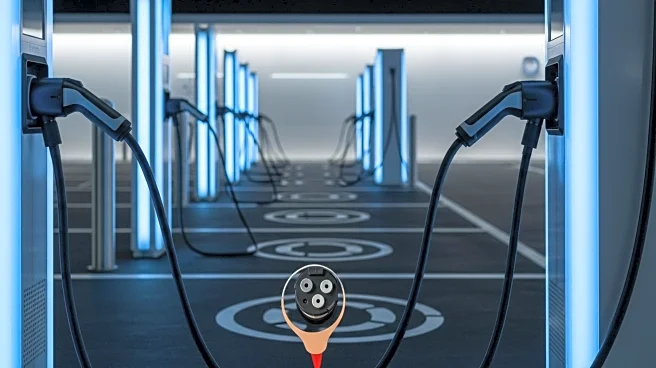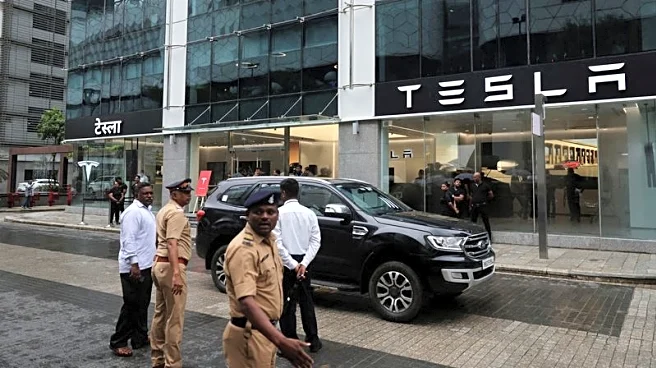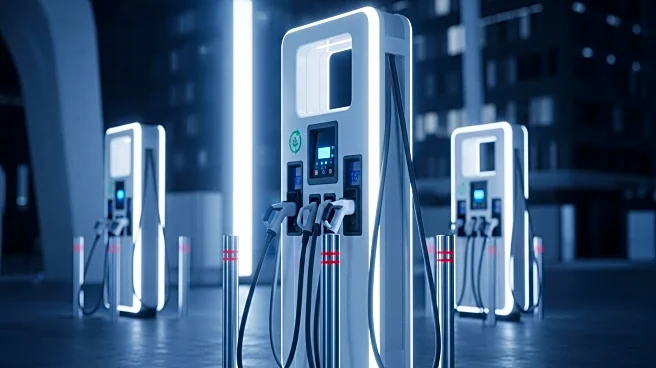What's Happening?
General Motors (GM) has reported a significant increase in electric vehicle (EV) sales, with a 111% year-over-year growth in Q2 2025, totaling 46,280 units and capturing 16% of the U.S. EV market. This growth contrasts with the sector's overall 6% contraction. The surge comes as federal incentives, specifically the Inflation Reduction Act's (IRA) EV tax credits, are being phased out due to the One Big Beautiful Bill Act (OBBBA) enacted in July 2025. This legislation ends the $7,500 rebates for new and used EVs by September 30, 2025. GM's strategy includes domestic manufacturing flexibility, cost-competitive battery innovation, and market diversification, aiming to maintain affordability and profitability despite the loss of federal support.
Why It's Important?
The expiration of federal incentives poses a significant challenge for the EV industry, potentially leading to decreased demand and increased competition. GM's proactive approach, including a $4 billion investment in U.S. plants and partnerships for battery innovation, positions it to mitigate these impacts. By focusing on affordability and production agility, GM aims to sustain its market share and profitability in a post-subsidy environment. This strategy contrasts with competitors like Tesla and Ford, who face greater challenges due to reliance on federal subsidies and production issues. GM's ability to adapt could set a precedent for other automakers navigating similar policy shifts.
What's Next?
As federal incentives expire, GM's investments in manufacturing and battery technology will be crucial in maintaining its competitive edge. The company's Orion and Spring Hill plants are set to produce both gas and EV models by 2027, ensuring resilience against changing consumer preferences. GM's long-term goals include achieving carbon neutrality by 2040 and investing $35 billion in EV and autonomous vehicle technology through 2025. The success of these initiatives will determine GM's ability to sustain its market share and validate its strategy as a preemptive play in the evolving EV sector.
Beyond the Headlines
The phasing out of federal incentives highlights broader challenges in the transition to electric vehicles, including the need for infrastructure development and consumer education. GM's focus on expanding charging infrastructure through initiatives like Ultium Charge 360 addresses range anxiety, a key barrier to EV adoption. Additionally, the company's commitment to reducing battery costs and diversifying its product lineup reflects a strategic shift towards long-term sustainability and market resilience.
